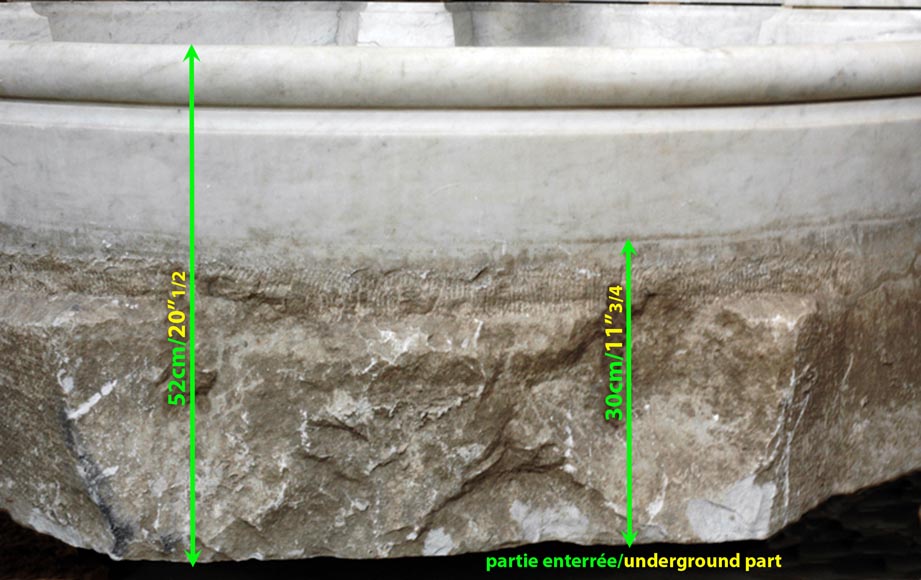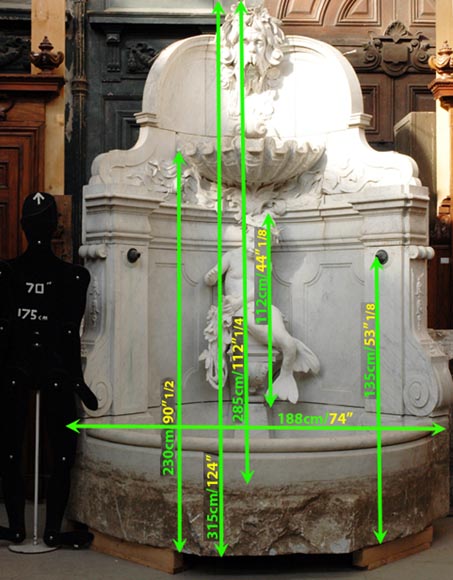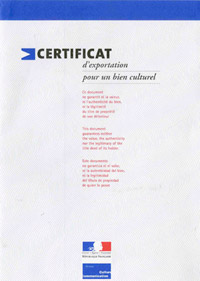Style Napoleon III / Ref.1199
Monumental Garden Fountain in Carrara marble and Statuary marble attributed to Rudolf Weyr, Vienna, late 19th century
Dimensions
Width 74'' 188cm
Height 124'' 315cm
Origin:
Late 19th century. Vienna, Austria.
Status:
Excellent condition. Small restorations shown on pictures.
Built on an angle with perfect symmetry and a veined Carrara marble architectural structure and decor, this beautiful fountain focuses on a central white Carrara Statuary marble figure of a young girl child.
The half moon basin links the two curved walls, which are flanked with oblique scrolled pilasters each adorned with a small fish head fountain spout.
The lower part of the fountain is subtly decorated with carved out panels, topped with a broad cornice that links it to the upper section, which is elaborately decorated with high and low relief carved features.
Supported by flowing water plants, a shell emerges at the center and like a large vessel receives the water spouting from the mouth of the flower-crowned river-God above. This strong portrayal of a river-God obeys the code for male water divinities: thick rough features, with hair, moustache and beard flowing like a frozen water fall.
The water then gently flows from this vessel in delicate waves through the chiseled edge of the shell. Notice the remarkable talent of the sculptor who adapted the decor to create the desired water effects.
As it falls over the shell edge, the water creates a natural curtain, a delicate veil, which enhances the central figure, the masterpiece of this fountain. A young girl child sits, with naturally crossed palmed legs. Holding a garland of flowers in her left hand, the child lifts her right hand in a graceful and delicate gesture. The child’s head is crowned with foliage, her hair pulled back in a small bun.
This fountain is attributed to Rudolf Weyr (1847-1914), an important Viennese sculptor from the late 19th century.
We estimate this fountain was created between 1890 and 1895. This was the peak period for Viennese Neo-Baroque that began around 1870.
Lavish with sculpture, this vogue revisited both the Baroque and Rococo styles; sculptors with strong personalities were able to impose their aesthetics. This work presents a synthesis typical of Vienna of the time: a mixture of Rococo and Baroque, of Italian and German motifs.
Here, the figure of the river-God belongs to the Roman Baroque, such as the works of Giambologna, but the theme of the mermaid is more from the North. Romanticism in the Northern countries brought back to life old myths and characters from the past. It was in the 19th century in Denmark that Hans Christian Andersen wrote ""The Little Mermaid"" and that Richard Wagner in Germany honored the German myths in his operas, especially the famous Nixen (nymphs) of the Rhine.
Informations
Export certificate:
Available
Price: on request
Recommended for you :
Dimensions:
Height: 52
Diameter: 70
Dimensions:
Width: 178
Height: 180
Depth: 120
Dimensions:
Width: 107
Height: 60
Depth: 107
Dimensions:
Width: 24
Height: 110
Depth: 136
Dimensions:
Width: 89
Height: 57
Depth: 9
Dimensions:
Width: 145
Height: 196
Depth: 102
Dimensions:
Width: 28
Height: 146
Depth: 46
Dimensions:
Width: 31
Height: 67
Depth: 37
Dimensions:
Width: 73
Height: 75
Depth: 73
Dimensions:
Width: 69
Height: 90
Depth: 51




































